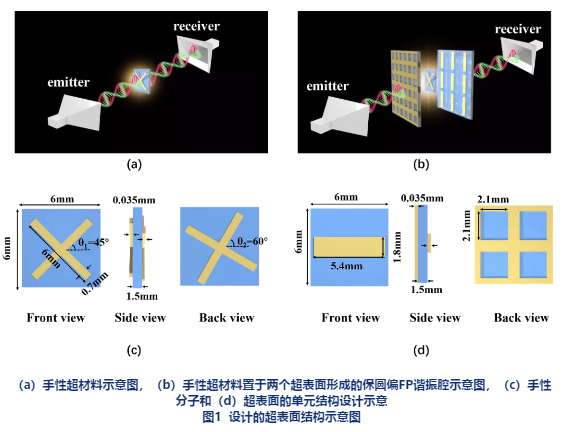Date:Apr 29, 2020
Source: School of Optoelectronic Engineering and Instrumentation Science
By Li Xiang, Cao Tun
In collaboration with Prof. Jiang Weixiang from Southeast University and Prof. Zhang Shuang from University of Birmingham, Prof. Cao Tun of School of Optoelectronic Engineering and Instrumentation Science at DUT has published important research work entitled Chirality Enhancement Using Fabry–Pérot-Like Cavity in Research, a cooperative journal of Science.

Chiral molecules that do not superimpose on their mirror images are the foundation of all life forms on earth. Chiral molecules exhibit chiroptical responses, i.e., they have different electromagnetic responses to light of different circular polarizations. However, chiroptical responses in natural materials, such as circular dichroism and optical rotation dispersion, are intrinsically small because the size of a chiral molecule is significantly shorter than the wavelength of electromagnetic wave. Conventional technology for enhancing chiroptical signal entails demanding requirements on precise alignment of the chiral molecules to certain nanostructures, which however only leads to a limited performance. Herein, they show a new approach towards enhancement of chiroptical effects through a Fabry–Pérot (FP) cavity formed by two handedness-preserving metamirrors operating in the GHz region. They experimentally show that the FP cavity resonator can enhance the optical activity of the chiral molecule by an order of magnitude. Their approach may pave the way towards state-of-the-art chiral sensing applications.

Prof. Cao Tun, deputy dean, professor and doctoral supervisor of School of Optoelectronic Engineering and Instrumentation Science. His research team has always been facing the major needs of the country and has been committed to the research of micro-nano components and their applications for a long time.
Research is the official journal of the China Association for Science and Technology (CAST) and is published in collaboration with the American Association for the Advancement of Science (AAAS). Launched in 2018, Research is the first AAAS/Science Partner Journal, a program that connects respected research institutions to the global scientific community.
The School of Optoelectronic Engineering and Instrumentation Science of Dalian University of Technology was established in January 2017. It was established by the integration of two first-level disciplines of optical engineering and instrument science to promote the realization of the strategic goal of “Double First-Class” Initiative. The School always faces the frontier of disciplines and the major needs of the country, and is committed to gathering first-class teachers, building first-class disciplines and cultivating first-class talents. At present, the School is in the stage of rapid development, and hereby invites outstanding academic talents and research teams from all levels at home and abroad to join us. For the specific remuneration, please refer to the relevant regulations of DUT or contact dlutoeis@ for more information. And the remuneration of high-level talents will be discussed person-by-person.
Editor: Li Xiang